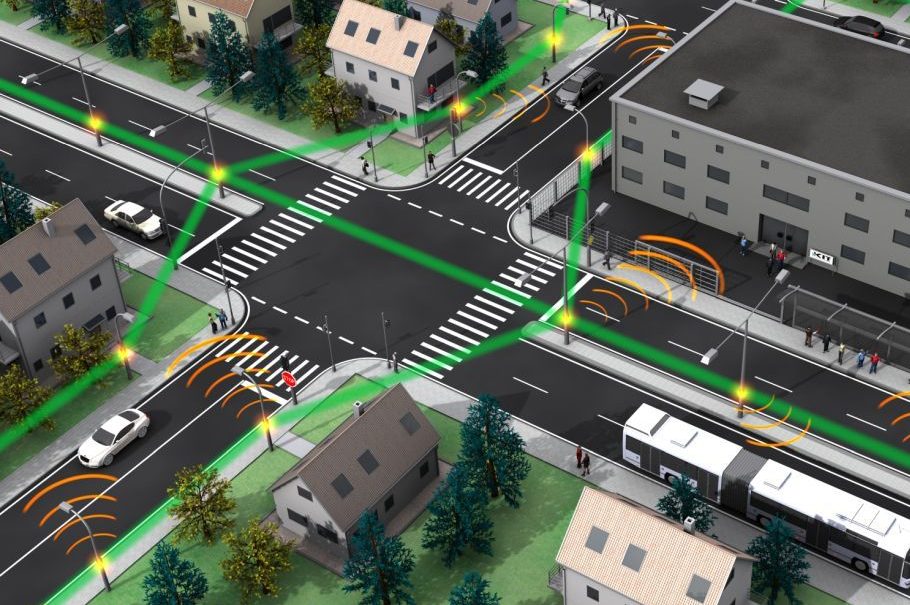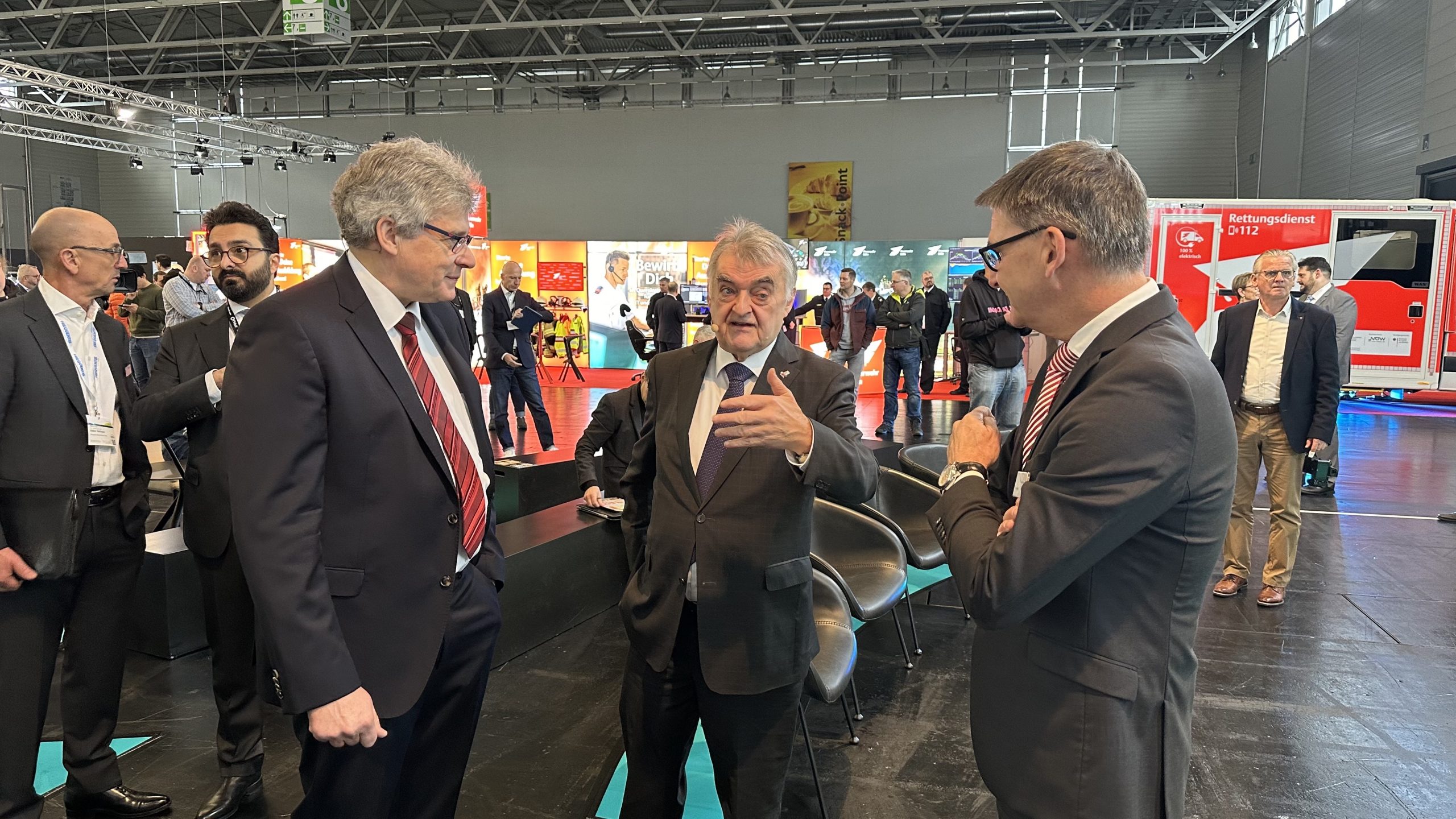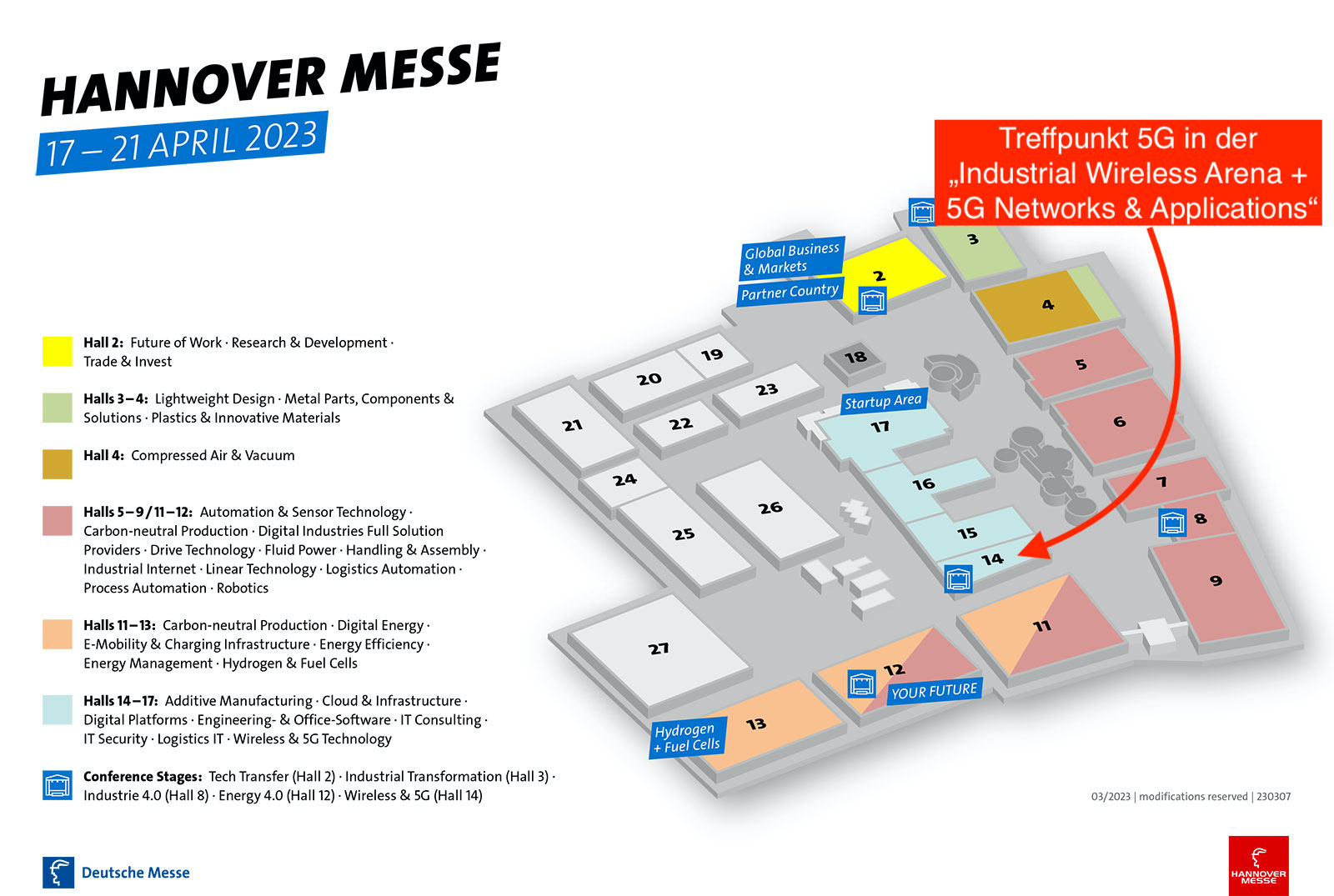Mobile radio network of the future: Extremely small radio cells (“Radio cell”, orange) are linked together via wireless terahertz links (“High-capacity THz link”, green). (Figure: IPQ, KIT / Nature Photonics)
Waiting and drinking tea could be the motto in many companies in the Corona pandemic. This is no wonder, because in many management levels, investment in infrastructure is not necessarily at the top of the priority list in a crisis. But while the industry is rather hesitant to work on 5G, research is already one step ahead and experimenting with 6G.
Future sixth generation (6G) mobile networks will consist of many small radio cells. To connect them wirelessly, frequencies in the terahertz (THz) range are a good option. Researchers at the Karlsruhe Institute of Technology in Germany have developed a new concept for simple and cost-effective terahertz receivers that consist of a single diode and combine it with a special signal processing method. This allows a data transmission rate of 115 Gbit/s on a carrier frequency of 0.3 THz over a distance of 110 meters.
Integrating artificial intelligence
On 5G, 6G will follow: The sixth generation of mobile communications promises even higher data transfer rates, shorter delay times and a greater density of end devices. It will also integrate artificial intelligence, for example to coordinate devices in the Internet of Things (IoT) or autonomous vehicles. “In order to serve as many users as possible at the same time and to transmit as much data as possible as quickly as possible, the wireless networks of the future will have to consist of numerous small radio cells”, explains Professor Christian Koos, who is researching 6G technologies at KIT together with his colleague Professor Sebastian Randel. In these radio cells, the distances are short so that large data rates can be transmitted with minimum energy consumption and low electromagnetic immission. They require only small base stations that can be attached to street lamps, for example.
6G requires an even tighter network than 5G
To connect the individual cells, high-performance radio links are required, on which dozens or even hundreds of gigabits per second (Gbit/s) can be transmitted on one channel. Frequencies in the terahertz range, which lie in the electromagnetic spectrum between microwaves and infrared radiation, are suitable for this purpose. However, the corresponding receivers are still comparatively complex and correspondingly expensive, and they often represent the bottleneck for the attainable bandwidth. Researchers at the Institute of Photonics and Quantum Electronics, the Institute of Microstructure Technology, and the Institute of Accelerator Physics and Technology of the KIT have now, together with the diode manufacturer Virginia Diodes in Charlottesville/USA, designed a particularly simple and inexpensive receiver for terahertz signals and presented it in the journal Nature Photonics.
Diode Receives Data
“A single diode is used as the receiver, with which the terahertz signal is first rectified”, explains Dr. Tobias Harter, who built the receiver together with his colleague Christoph Füllner as part of his dissertation. This is a so-called Schottky diode, which is characterized by high speed. It functions as an envelope detector and recovers the amplitude of the terahertz signals.
However, for correct decoding of the data signal, the time-varying phase of the terahertz wave is additionally required, which is usually lost during rectification. To solve this problem, the researchers use digital signal processing methods in combination with a special class of data signals in which the phase can be reconstructed from the amplitude using the so-called Kramers-Kronig relations. The Kramers-Kronig relation is a mathematical relationship between the real and imaginary parts of an analytical signal.
“This is the highest data rate ever demonstrated with wireless terahertz transmission over more than 100 meters.”
Researcher Christoph Füllner
With the new receiver, the scientists achieved a data transmission rate of 115 Gbit/s on a carrier frequency of 0.3 THz over a distance of 110 meters. The terahertz receiver, developed at KIT, is characterized by its simple design and lends itself to cost-effective production in large quantities.








Leave A Comment